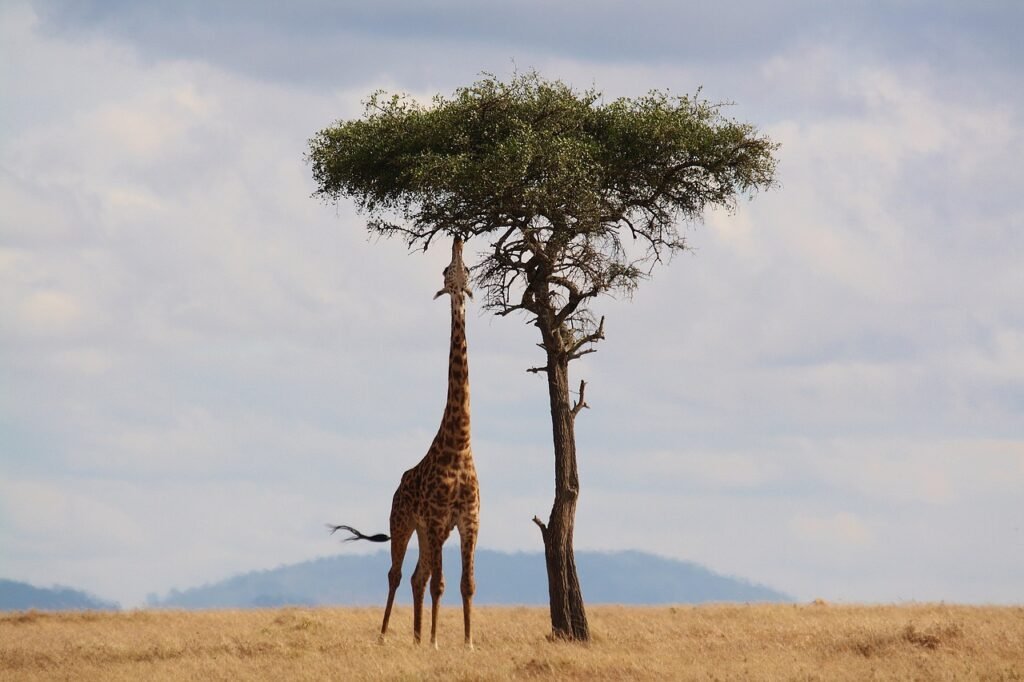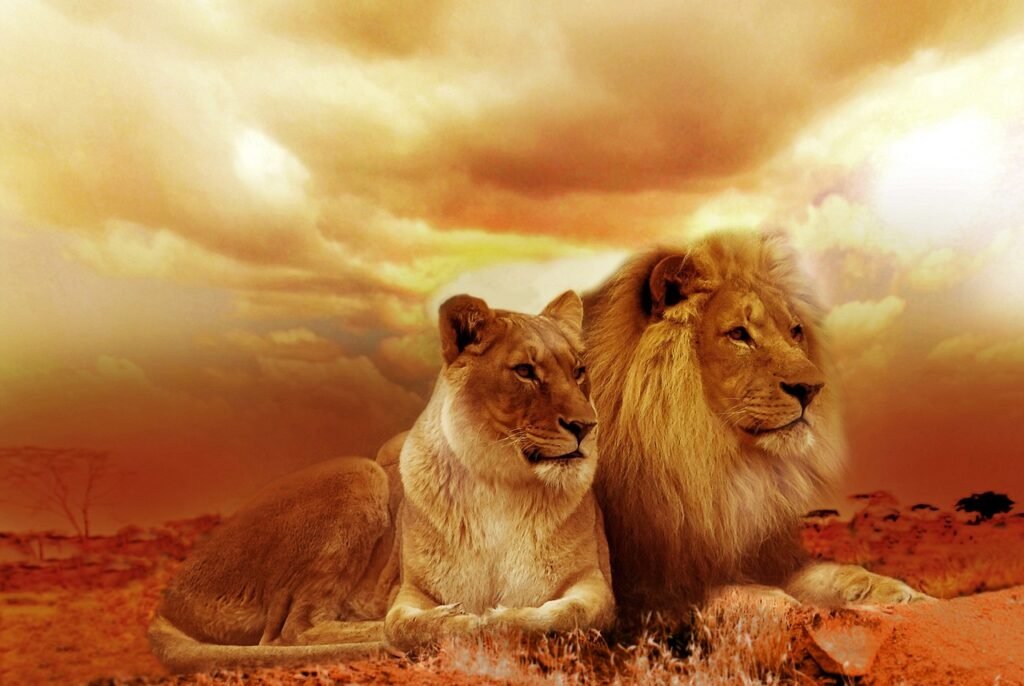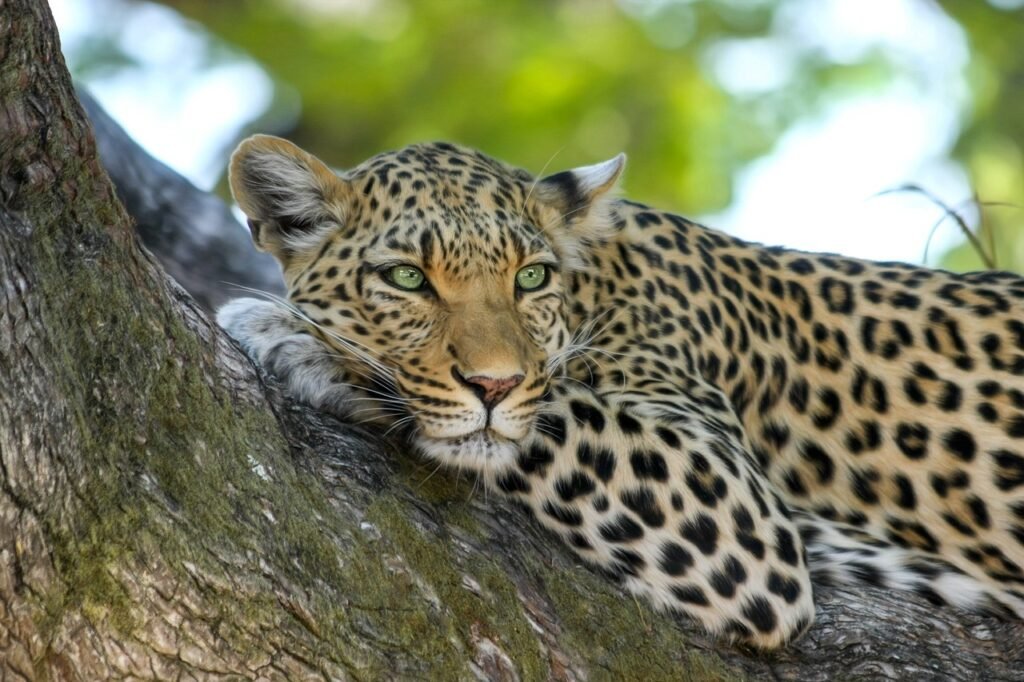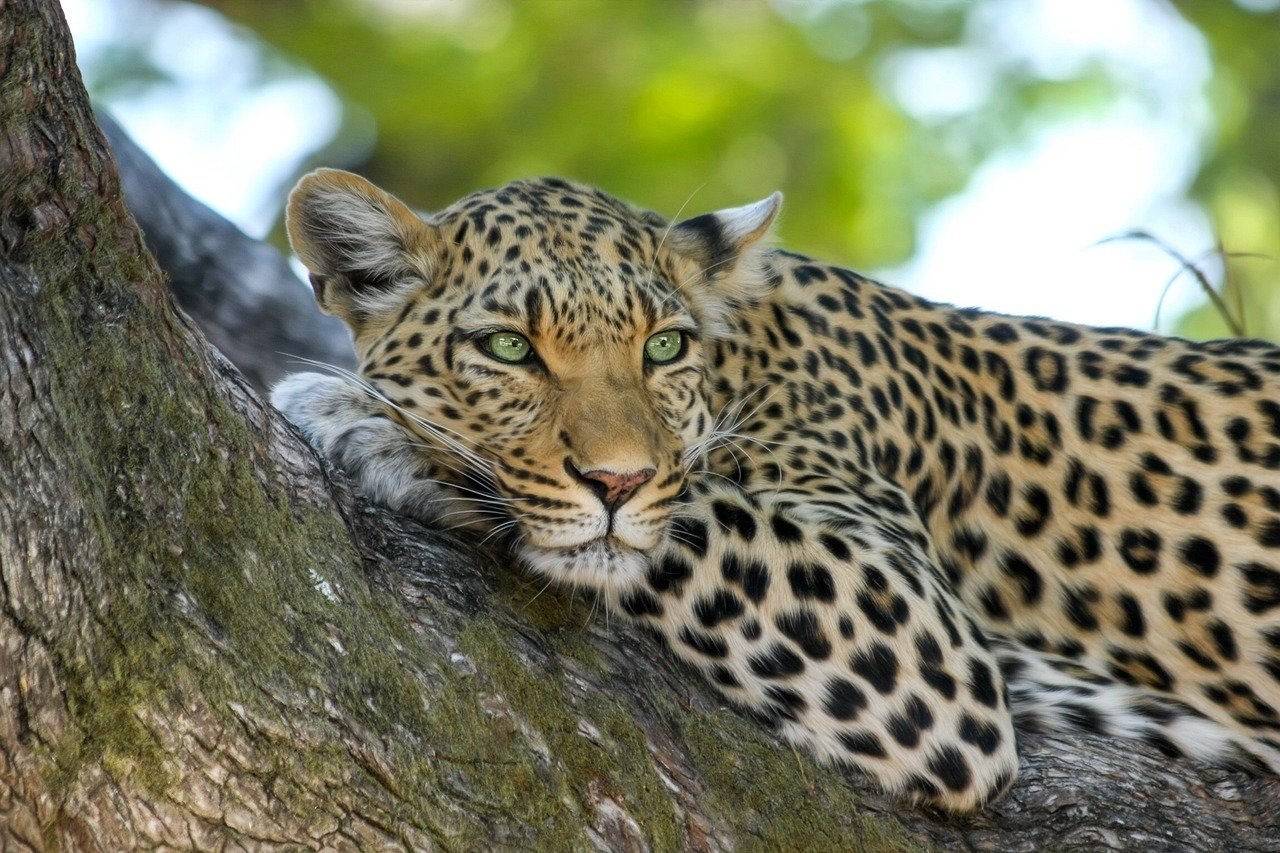Embark on an exciting journey through the vast and breathtaking landscapes of Kenya, where a world of vibrant and diverse wildlife awaits. From the elegant giraffes gracefully moving across the savannah to the mighty elephants bathing in sun-dappled rivers, you will encounter some of the most awe-inspiring creatures on the planet. Kenya’s rich and varied ecosystems are home to an abundance of wildlife, including majestic lions, elusive leopards, and playful zebras. Join us on this remarkable adventure as we unveil the wonders that await you on a Kenyan safari.

This image is property of pixabay.com.
Big Cats
Lions
Lions are one of the most iconic and majestic animals you can expect to see on a Kenyan safari. With their golden coats and powerful presence, they are often referred to as the kings of the African savannah. Lions are highly social animals, living in prides consisting of several related lionesses, their cubs, and a dominant male lion. The lionesses are the primary hunters, working together to bring down prey, while the male lion guards the territory and protects the pride. The roar of a lion can be heard from miles away and is a spine-tingling experience that you won’t soon forget.
Leopards
Leopards are known for their stealth and elusive nature, making them a thrilling sight to witness on a Kenyan safari. These solitary big cats are excellent climbers and are often found resting or hunting on the branches of trees. With their stunning rosette patterned fur, leopards are masters of camouflage, allowing them to blend seamlessly into their surroundings. Their powerful build enables them to take down prey larger than themselves, and their agility allows them to navigate even the trickiest terrain with ease.
Cheetahs
Cheetahs are the fastest land animals, capable of reaching incredible speeds of up to 70 miles per hour in just a few seconds. These sleek and slender big cats have a slender body, long legs, and a distinctive black “tear mark” running from the inner corner of their eyes down to the side of their mouth. Unlike lions and leopards, cheetahs are solitary by nature and are known for their exceptional hunting skills. They rely on their speed and agility to chase down their prey, often targeting smaller antelope species such as gazelles.
African Elephants
Behaviour
African elephants are the largest land animals in the world and are a remarkable sight to behold on a Kenyan safari. These gentle giants exhibit complex social behaviors, living in matriarchal herds led by an older, experienced female known as the matriarch. Elephants are highly intelligent and exhibit remarkable emotional intelligence, forming strong bonds within their family groups. They communicate through a wide range of vocalizations, gestures, and even infrasound, which is below the range of human hearing. Watching these magnificent creatures interact and care for their young is a truly awe-inspiring experience.
Population
Kenya is home to a significant population of African elephants, playing a crucial role in the conservation efforts of this vulnerable species. The country’s diverse ecosystems provide important habitats for elephants, ranging from grasslands to savannahs and even dense forests. However, like many other elephant populations, they face the threat of habitat loss, poaching, and human-wildlife conflict. Conservation initiatives in Kenya aim to protect these magnificent creatures and ensure their survival for generations to come.

This image is property of pixabay.com.
Giraffes
Retractable Necks
African giraffes are known for their extraordinary long necks, allowing them to reach leaves and vegetation that other animals can’t. Contrary to popular belief, giraffes have the same number of neck vertebrae as most mammals, but each vertebra is elongated. Their long necks are also incredibly flexible, enabling them to bend and reach the ground with ease. Watching these graceful giants browsing on tall acacia trees is a captivating sight that showcases their unique feeding adaptations.
Unique Spots
Giraffes are instantly recognizable by their beautiful coat patterns, consisting of irregular patches and spots that are as unique as fingerprints. Each individual has a different pattern, making it possible to identify and track them. Scientists believe that the patterns may serve as a form of social recognition, aiding in communication and bonding between giraffes. Whether they are standing tall against the savannah backdrop or gracefully moving in herds, the sight of these majestic animals with their stunning spots is a photographer’s dream.
Rhinoceros
Black Rhinos
The black rhinoceros is a critically endangered species, and spotting one in the wild is a rare and incredible experience. Although their name suggests a black color, their skin is actually gray and rough, providing excellent protection against predators. Rhinos have poor eyesight but compensate with sharp hearing and a strong sense of smell. Due to poaching and habitat loss, their population has significantly declined, and conservation efforts in Kenya are focused on protecting and increasing their numbers.
White Rhinos
White rhinos are the larger of the two rhino species found in Africa and are also classified as near-threatened. Contrary to their name, they possess a similar grayish complexion as black rhinos. White rhinos have a broad flat mouth, adapted for grazing on grasses, and are often found in more open savannah habitats compared to their black rhino counterparts. Witnessing a white rhino leisurely grazing in the Kenyan grasslands is a testament to the country’s commitment to conservation and preserving these magnificent creatures.

This image is property of pixabay.com.
Buffalos
Cape Buffalo
The Cape buffalo, also known as the African buffalo, is one of the most dangerous animals you might encounter on a Kenyan safari. These imposing and robust creatures have earned a reputation for being unpredictable and aggressive. Cape buffalos live in large herds, led by a dominant male or “old bull,” which is responsible for protecting the group from predators. Known for their powerful horns, which can span up to six feet wide, they are a force to be reckoned with. Observing the raw power and protective nature of these magnificent beasts from a safe distance is a humbling experience.
Forest Buffalo
While the Cape buffalo occupies the savannahs and grasslands, the forest buffalo thrives in the dense forests and swamps of Kenya. These smaller and more elusive buffalos are excellent swimmers and are adapted to the challenging terrains they inhabit. Forest buffalos have shorter and curved horns compared to their savannah-dwelling relatives, which helps them navigate through dense vegetation. Spotting a forest buffalo in its natural habitat requires patience and an eye for detail, but the reward of witnessing these unique creatures is worth the effort.
Hippopotamus
Habitat
Hippos are semi-aquatic mammals that spend most of their time submerged in rivers and lakes. Kenya is home to numerous water bodies, providing ideal habitats for these behemoths. Although they might seem gentle and sluggish while submerged, hippos are known for being highly territorial and aggressive, especially when they perceive a threat to their young or their territory. Seeing hippos grazing or basking in the sun along the banks of a Kenyan river is a captivating sight that shows the intricate balance between these gentle giants and their aquatic environment.
Social Behavior
Despite spending much of their time in the water, hippos are social animals and form complex social structures. They live in pods consisting of females, their young, and a dominant male, who safeguards the pod and establishes his authority through displays of aggression. Hippos have a wide range of vocalizations, from grunts and roars to honks, which they use for communication within their pod. Observing these colossal creatures interact with each other is a reminder of the fascinating and intricate social dynamics that exist in the animal kingdom.
Crocodiles
Nile Crocodile
The Nile crocodile is one of the largest crocodile species in the world and can be found in Kenya’s rivers and lakes. These ancient reptiles are well-adapted predators, with powerful jaws capable of delivering a bone-crushing bite. Nile crocodiles are patient and stealthy hunters, silently waiting for their prey to approach the water’s edge before launching an ambush. Witnessing a Nile crocodile silently gliding through the water or basking on a sun-kissed riverbank is a thrilling experience that showcases the impressive survival strategies of this apex predator.
African Dwarf Crocodile
The African dwarf crocodile is a smaller species compared to the Nile crocodile, but equally fascinating in its own right. Despite its “dwarf” classification, this crocodile can still grow up to six feet in length. African dwarf crocodiles are habitat specialists, predominantly found in freshwater swamps and rainforest ecosystems. They have a more secretive nature compared to their larger relatives, often camouflaging themselves amongst submerged branches and vegetation. Spotting an African dwarf crocodile requires a keen eye and an appreciation for the remarkable diversity within the crocodilian family.
Antelopes
Gazelles
Gazelles are elegant and nimble antelopes that can be found in various regions of Kenya. These graceful animals are built for speed, with long legs and a slender body enabling them to outrun many of their predators. Gazelles are known for their breathtaking leaps, referred to as “pronking,” where they simultaneously spring into the air and lift all four feet off the ground. This display serves various purposes, including communication, mating rituals, and evading potential threats. Observing a gazelle in its natural habitat, gracefully bounding through the savannah, is a testament to the beauty and adaptability of African wildlife.
Impalas
Impalas are another common antelope species in Kenya, known for their striking reddish-brown coat and impressive horns. These medium-sized antelopes are highly adaptable and can be found in a wide range of habitats, from woodlands to grasslands. Impalas exhibit a social structure based on a harem system, where a dominant male oversees a group of females and defends them from rival males. Witnessing a herd of impalas grazing or leaping effortlessly over obstacles is a reminder of the vibrant and diverse wildlife that thrives in Kenya’s landscapes.
Topis
Topis are antelopes that possess unique physical features, making them stand out in the vast grasslands of Kenya. Both male and female topis have distinctive elongated horns that curve backward and then forward. These impressive horns play a crucial role in defense and territorial displays. Male topis engage in “leking” behavior, where they establish small territories and produce loud vocalizations to attract females. The sight of male topis engaging in these displays is a captivating sight that showcases the fascinating evolutionary adaptations within this species.
Birds
Ostriches
Ostriches are the largest and heaviest birds in the world, often regarded as a symbol of Africa’s wildlife. These flightless birds have long legs and powerful muscles that allow them to run at incredible speeds, reaching up to 40 miles per hour. They are known for their striking appearance, with their long necks, feathery plumes, and large eyes. Ostriches also have impressive parenting skills, with males actively involved in incubating eggs and raising the chicks. Witnessing a group of ostriches sprint across the plains or witnessing their giant nests is a delightful encounter that highlights the diversity of avian life in Kenya.
Secretary Birds
Secretary birds are easily recognizable by their unique appearance, with long legs, a feathered crest on their head, and their ability to gracefully march through the grasslands. These birds derive their name from their striking resemblance to a secretary with quill pens tucked behind their ears. Secretary birds have an unusual hunting technique, using their long legs to stamp and kick their prey, usually consisting of small mammals and reptiles. Witnessing a secretary bird on a Kenyan safari is a thrilling experience that showcases the remarkable adaptability and hunting strategies found within the avian world.
African Fish Eagles
The African fish eagle is a magnificent raptor known for its distinctive call, often associated with the wilds of Africa. These majestic birds have a wingspan of around six feet, enabling them to soar effortlessly above Kenya’s lakes and rivers. African fish eagles are skilled hunters, primarily feeding on fish, which they snatch from the water’s surface with precision. Spotting an African fish eagle perched on a tree overlooking a glittering lake or witnessing its dramatic swoop into the water to catch a fish is a reminder of the intricate web of life that exists around Kenya’s water bodies.
Zebras
Migration
Zebras are among the most iconic animals you can encounter on a Kenyan safari, known for their distinctive black and white striped patterns. These patterns serve as a form of camouflage, confusing predators and making it more challenging to single out an individual zebra within a group. Zebras are known for their impressive annual migration, where thousands of these magnificent creatures gather and undertake a journey in search of fresh grazing areas. Witnessing the sight of endless zebras moving in unison across the savannah is a breathtaking spectacle that illuminates the beauty and resilience of African wildlife.
Striped Patterns
The striped patterns of zebras have been a subject of fascination for scientists and have given rise to various theories about their purpose. Some researchers believe that the stripes help regulate body temperature, while others suggest that they act as a form of visual communication between zebras. Additionally, the patterns may also serve as a natural repellent to biting insects, as the stripes create an optical illusion that confuses pests. The unique markings on each zebra make them easily identifiable, allowing researchers and enthusiasts to track individual zebras and gain insights into their behavior and movements.
In conclusion, a Kenyan safari offers the opportunity to witness an incredible array of wildlife, each with its own unique characteristics and behaviors. From the powerful big cats to the gentle giants of the savannah, the diverse bird species to the mesmerizing patterns of zebras, Kenya’s wildlife never fails to impress. By exploring the vast landscapes and diverse ecosystems, visitors can gain a deeper appreciation for the intricate web of life and the importance of conservation efforts in preserving these magnificent creatures. So, grab your binoculars, embrace the friendly atmosphere, and embark on a thrilling adventure to witness the wonders of Kenyan wildlife firsthand.

